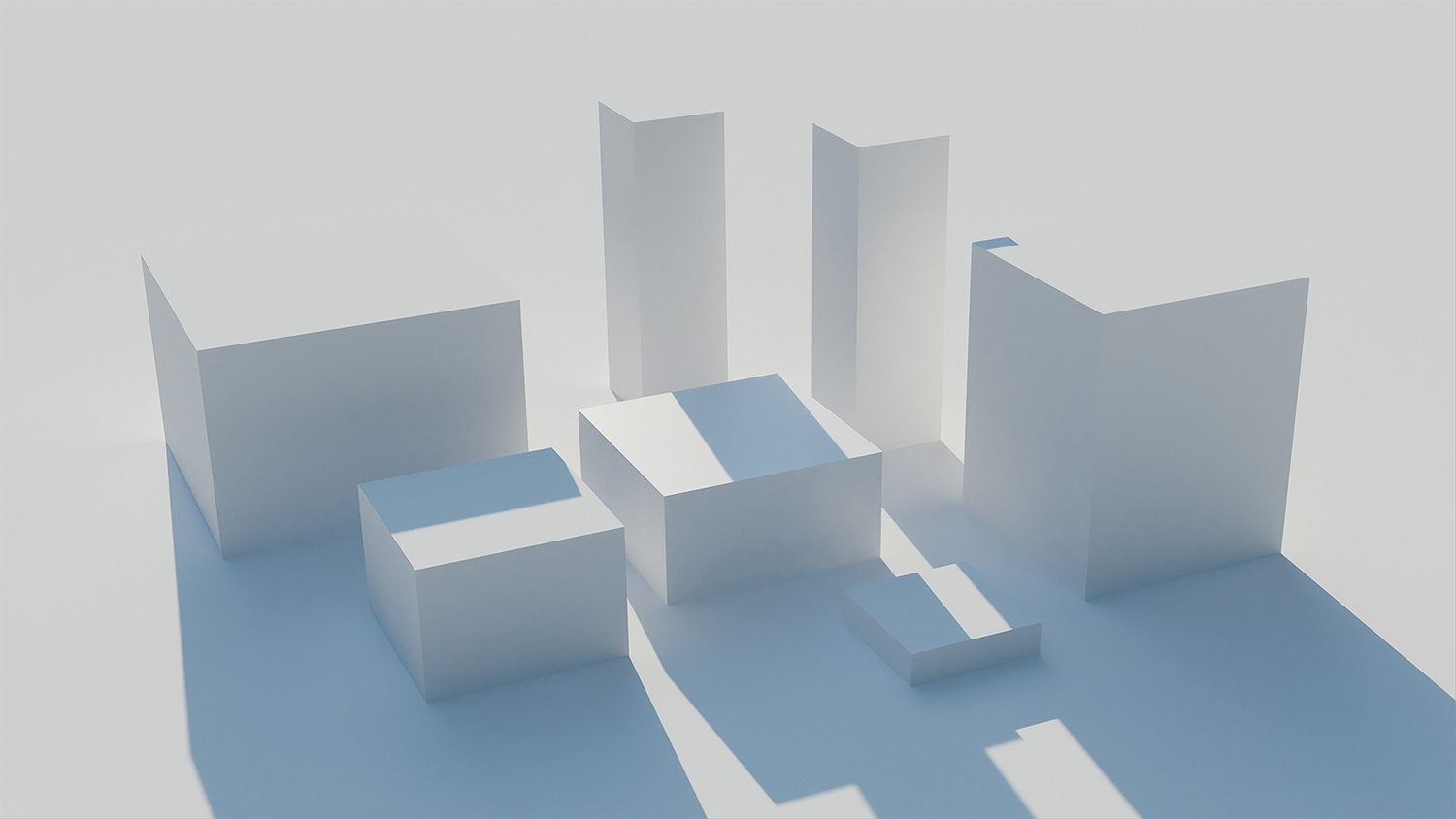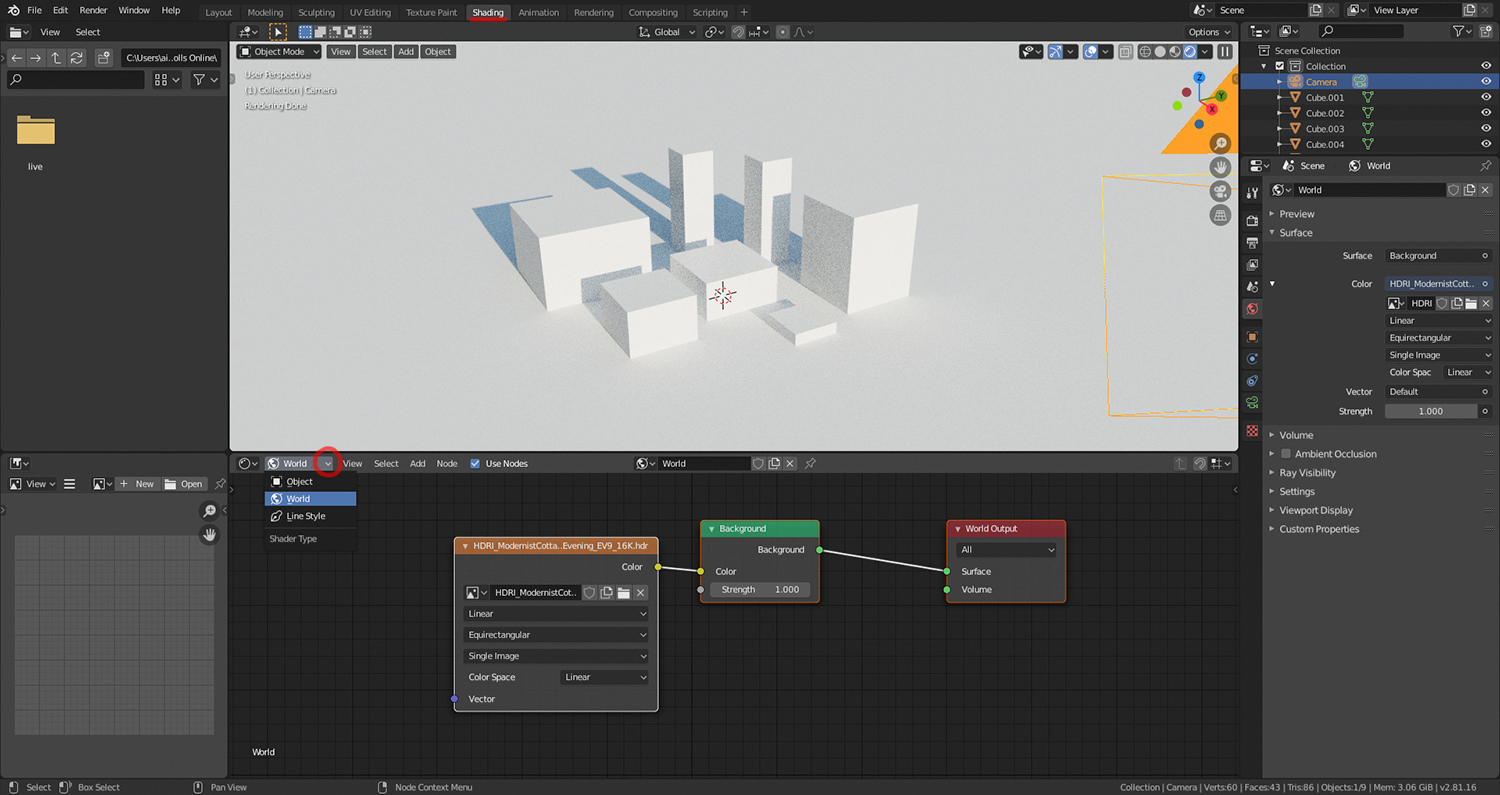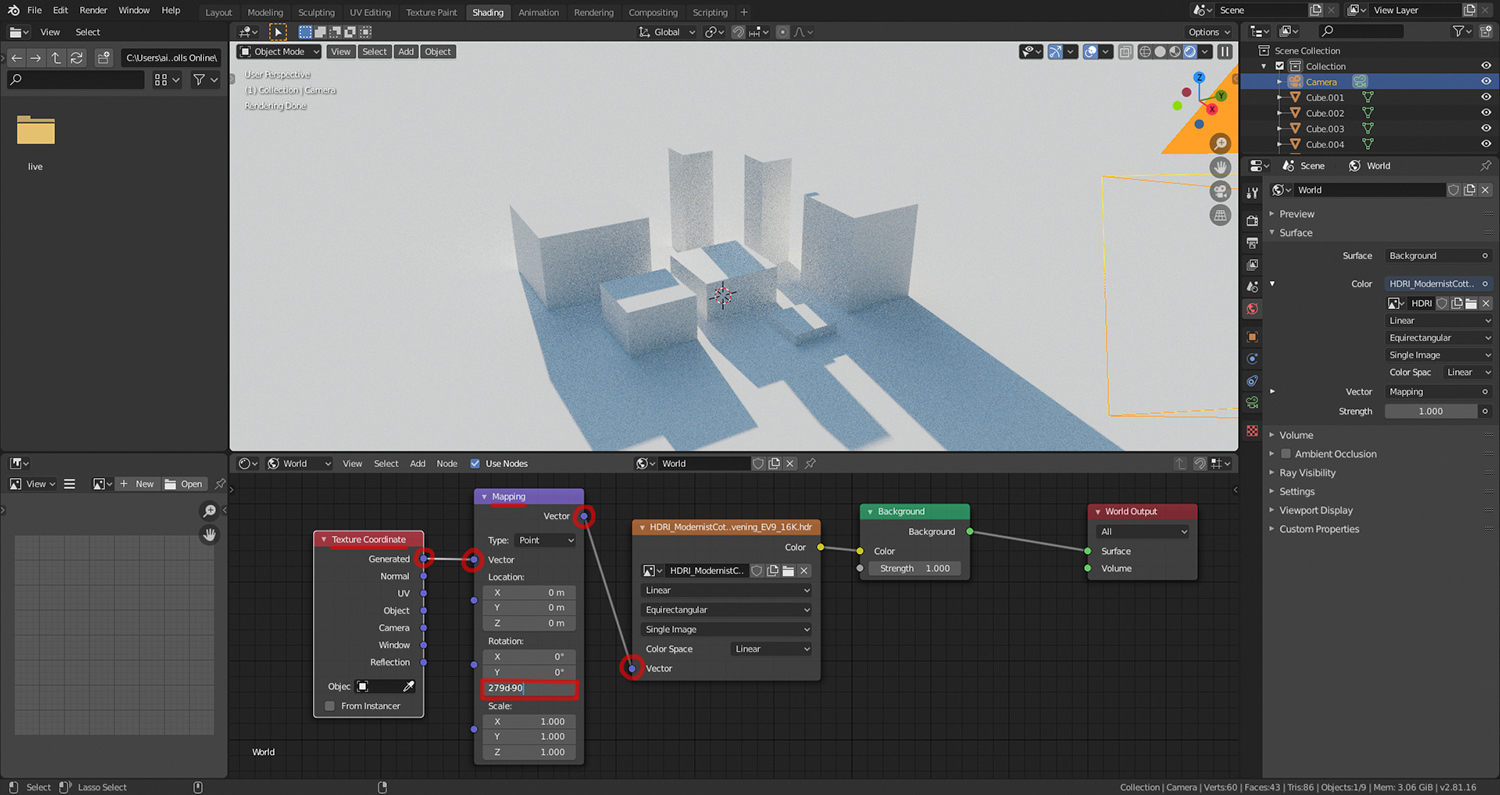This short tutorial covers how to rotate an HDRI environment texture in Blender 2.93, to accurately replicate the horizontal sun bearing of the captured environment for an aifosDesign HDRI , or to customize the light's rotation for artistic endeavours for any HDRI. The above example scene is lit only by HDRI – Modernist Cottage in Forest (Summer; Early Evening).
Originally created in January 2020 for Blender 2.81, this tutorial has been scrutinized and verified to work with Blender 2.82, as of February 2020. As of June 2020, the same process applies for Blender 2.83. The same is valid for Blender 2.90, as of September 2020. As of August, 2021, this applies for Blender 2.93 as well, with the assumption that intermediate versions are compatible as well.
Make sure that the HDRI of your choice is correctly imported for use in Blender as per previous tutorial.
Enter the [Shading] workspace.
Change <Viewport Shading> to [Rendered], if not already set so.
In the <Shader Editor>, change the shader to [World].
Press SHIFT+A to add a [Texture Coordinate] node (found in <Input>\).
After having placed the node with LMB, repeat SHIFT+A to add a [Mapping] node (found in <Vector>\), and place also this with LMB.
Connect the <Texture Coordinate> node's <Generated> output to the <Mapping> node's <Vector> input, by click-dragging between the two.
Repeat the procedure to connect the <Mapping> node's <Vector> output to the HDRI file node's <Vector> input.
With the <Mapping> node's mode set to [Point], you are now free to rotate the HDRI by adjusting the value for [Z] under <Rotation:>.
Positive Z rotation results in the HDRI environment horizontally rotating clockwise.
Thus, to specify correct rotation with regards to the cardinal directions, simply enter the sun bearing horizontal degree value (clockwise from North) given for all aifosDesign HDRIs with sunlight as primary light, and North will be aligned with the positive X axis. If you prefer the positive Y axis as North, subtract 90 degrees from the previously entered value (e.g. 279d-90).
If you encounter any issues, please write a comment below, and we will do our best to solve the problem.
Recommended tutorials to continue with:
Placeholder Tutorial
If you would like to return to the overview of our tutorials, please click here.


